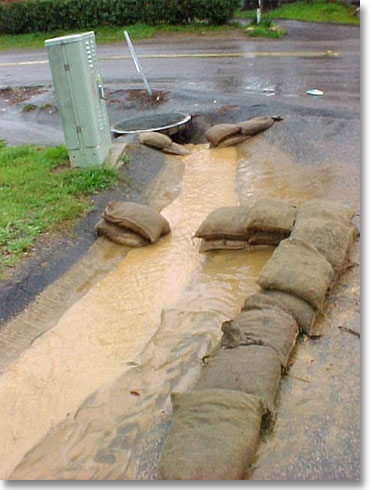What Are Best Management Practices ?

Best Management Practices (BMPs) are
- temporary air and water pollution control measures which are used during construction, especially for grading, and
- permanent rainwater pre-treatment facilities, which are used to filter runoff from impervious surfaces (e.g., roofs, hardscaping, parking lots.
The term was first used in an amendment to the Clean Water Act for the Non Point Discharge Elimination System (NPDES). Construction temporary measures include dust-control watering, silt fences and fiber rolls (wattles), stockpile tarping, and detention ponds. Permanent rainwater pre-treatment facilities include mechanical filters, gravel beds beneath pervious pavement, and landscaping.
How Are BMPs Enforced ?
The EPA can assess fines up to $37,000 each day for violations of the Clean Water Act. Since these are typically assessed against the local permitting authority, jurisdictions are keenly aware of the regulations and the need for enforcement. The Stormwater Pollution Prevention Plan (SWPPP), which is prepared and monitored by a Qualified SWPPP Practitioner (QSP) is required for construction projects that disturb one acre more of land by grading, vegetation clearing, or excavation. A SWPPP:
- identifies all potential sources of pollution which may reasonably be expected to affect the quality of storm water discharges from the construction site, and
- describes temporary practices to be used to reduce or eliminate pollutants (typically sediment) in storm water discharges from the construction site, and
- is generally required to be submitted with the discretionary permit application.
Permanent post-construction facilities to filter stormwater before it is discharged off-site are required for parcels with more than 10,000 square feet of impervious surfaces. The preferred method is bio-filtering with landscaping to trap sediment and other pollutants (e.g., oil, ) on-site. Structural Controls are used to reduce the stormwater volume and peak discharge. Non Structural Controls are used to reduce the generation and accumulation of pollutants transported by stormwater.
Check the Links below and your local jurisdiction’s website for additional information.
Links
BUILDING in CALIFORNIA
- Sustainability – Water Quality
- Forms
- SWPPP
- Construction Management Plan
California Stormwater Quality Association
Environmental Protection Agency
- Stormwater Management Best Practices
- Construction Site Stormwater Runoff Control
- Stormwater Pollution Prevention Plan (SWPPP)
CalTrans
California Water Resources Control Board